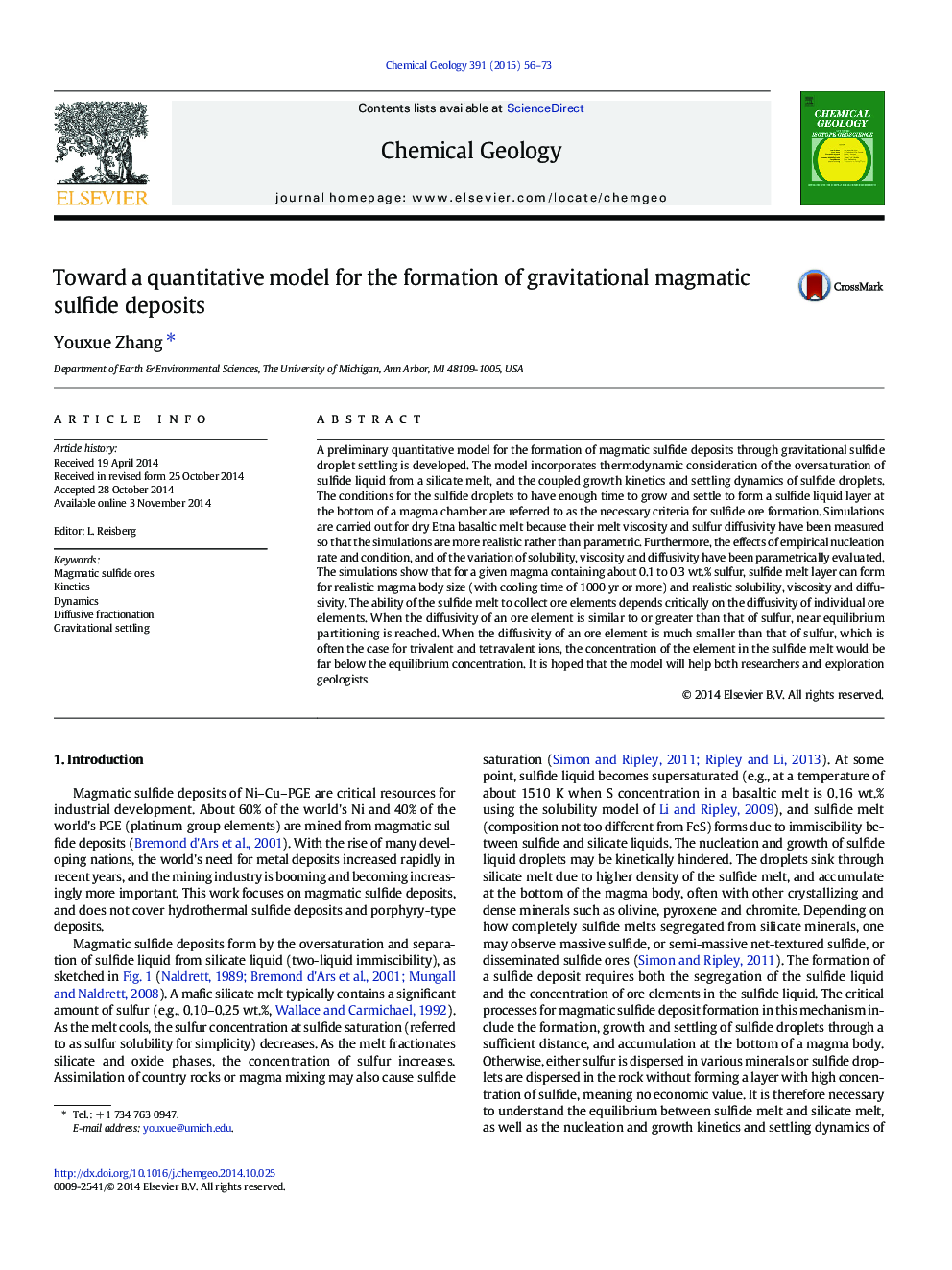| Article ID | Journal | Published Year | Pages | File Type |
|---|---|---|---|---|
| 4698622 | Chemical Geology | 2015 | 18 Pages |
Abstract
A preliminary quantitative model for the formation of magmatic sulfide deposits through gravitational sulfide droplet settling is developed. The model incorporates thermodynamic consideration of the oversaturation of sulfide liquid from a silicate melt, and the coupled growth kinetics and settling dynamics of sulfide droplets. The conditions for the sulfide droplets to have enough time to grow and settle to form a sulfide liquid layer at the bottom of a magma chamber are referred to as the necessary criteria for sulfide ore formation. Simulations are carried out for dry Etna basaltic melt because their melt viscosity and sulfur diffusivity have been measured so that the simulations are more realistic rather than parametric. Furthermore, the effects of empirical nucleation rate and condition, and of the variation of solubility, viscosity and diffusivity have been parametrically evaluated. The simulations show that for a given magma containing about 0.1 to 0.3Â wt.% sulfur, sulfide melt layer can form for realistic magma body size (with cooling time of 1000Â yr or more) and realistic solubility, viscosity and diffusivity. The ability of the sulfide melt to collect ore elements depends critically on the diffusivity of individual ore elements. When the diffusivity of an ore element is similar to or greater than that of sulfur, near equilibrium partitioning is reached. When the diffusivity of an ore element is much smaller than that of sulfur, which is often the case for trivalent and tetravalent ions, the concentration of the element in the sulfide melt would be far below the equilibrium concentration. It is hoped that the model will help both researchers and exploration geologists.
Related Topics
Physical Sciences and Engineering
Earth and Planetary Sciences
Geochemistry and Petrology
Authors
Youxue Zhang,
